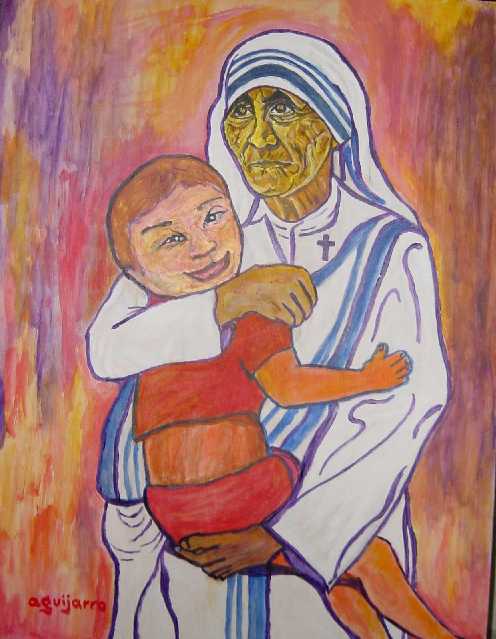I don't yet own Volumes 6 or 7 of the Godly Play scripts, containing Enrichment Lessons "for older children". (Most of Volume 8 hasn't even been published yet.) The materials for these enrichment lessons should sit underneath the Core Lessons in the classroom, and should be presented once children have really absorbed the Core Lessons. Since my circle is mostly children aged five and under, and since I'd never been introduced to the Enrichment Lessons by a GP trainer, I started off with the assumption that I would just ignore those for now.
But as Watkins and I discussed in the comments to her post about the Godly Play story of Joseph, an exclusive focus on the Core Lessons in Godly Play means accepting Berryman's determination of which are the foundational stories. If we're under the authority of a Sunday School committee or superintendent, it might be important to accept that determination, but for those who are using Godly Play in the home as Watkins is, or solely responsible for the Sunday School curriculum as I currently am, we carry a responsibility to decide for ourselves what stories our own children need to hear, and when.
Some of you probably feel like jumping in here to remind me that Berryman has been doing this for almost forty years. He has studied pedagogy and theology, and tested his ideas on generations of children. He's a priest, he has a doctorate, and he studied with Sofia Cavalletti. So I would agree that an important part of our decision-making process is to draw upon his knowledge and insights. But we also "follow the child". And we tell the stories of our faith and our own congregations from our own hearts.
Most stories of individuals are Enrichment Lessons rather than Core Lessons: Abraham, Moses, Ruth, Daniel, Jonah (yes - it's in Volume 2 but it's an enrichment lesson), and also the saints, from St. Patrick to Mother Teresa. The idea is that the curriculum is a spiral. Berryman sometimes calls the enrichment lessons "Extension Lessons" (Teaching Godly Play page 126). The stories of individuals follow on from and extend the Core Presentations. The Enrichment Lessons are therefore fitted into the larger context of "The Story of the People of God". The stories in Volume 7 show how the Holy Spirit continues to inspire and lead us as the People of God, the Communion of Saints, post-Pentecost.
 |
| "Teresa of Calcutta carrying Pepo, a friendly child with Down's Syndrome" by Aguijarro (by permission) |
But Berryman also emphasizes that Godly Play is not a complete children's program (this is repeated in the introduction to every volume of The Complete Guide to Godly Play). Ideally children are also participating in Vacation Bible School, listening to children's sermons at church, reading Children's Bibles at home, and talking to their parents and godparents. So of course stories of individuals in the Bible will have come up in those contexts.
Moreover, Berryman emphasizes how important it is to adapt [at least some of] his materials to our own circumstances. Here's a quote from the lesson on Holy Baptism: Adapt the materials according to the usage of your church. For example, if your church uses a shell for baptism, you can place one on the tray with the other materials. If your tradition baptizes by total immersion, you will need to work out a way to show that, perhaps by using a larger bowl or basin...
And that makes me think that for some of us it is surely appropriate to follow our own intuitions and present the Enrichment Lessons when we feel it is right for our children. But the lessons in Volume 6 haven't been written for young children. As Watkins wrote, they don't interact with the materials playfully. Then again, as I've mentioned already, not all the Enrichment Lessons are in Volumes 6-7. Did you know that even "The Holy Family" is labelled as an Enrichment Lesson? (I confess that I'm not sure why, unless it's because it's often presented not as the main lesson of the day, but as part of the getting ready when we enter a new liturgical season.)
As you might have guessed - I presented an Enrichment Lesson in our classroom yesterday. In my next post I plan to tell you which one that was, and how it went.


Hmmm. . . this is one of the discussions I have missed out on, having learned GP entirely in German. I didn't know there was a "core" and "enrichment" curriculum. I do know, however, that GP Deutschland spent 2 years coming up with their own versions of the stories that Watkins mentions in her comments. They did this, because like Watkins, they found laying everything out in a straight line on a felt underlay to be lacking in playfulness.
ReplyDeleteome of you probably feel like jumping in here to remind
ReplyDeleteyou that being led by the Spirit must take prescedence over B. even with all his experience etc.
"if your church uses a shell for baptism"
ReplyDeleteerm why would a church do that? Do you know any ...?
:) seethroughfaith.
ReplyDeleteI think some priests use a scallop shell instead of their hand to scoop up the water and then pour it out over the forehead of the person being baptized.